Mixing up the mixer market
While large players rule the tonic and mixers category, up-and-coming outfits are injecting a sense of adventure into the sector.
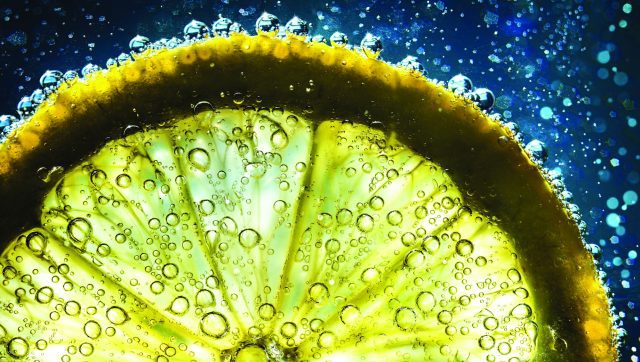
*This feature was originally published in the November 2023 issue of The Spirits Business magazine.
For the past decade, the tale of the tonic and mixer market has been an easy one to tell. As the gin boom gripped the globe, tonic sales soared, and Fever-Tree grabbed the lion’s share of the market. Since its launch in 2004, Fever-Tree has become the world’s biggest mixer brand, in 2022 sweeping Schweppes from its perch to become the top-selling tonic in the US. In the UK, it holds a 30% share of the mixer market, followed by Schweppes with 26%, and Britvic’s London Essence with 4.7%. It redefined the mixer category, pitching flavour over price, and tapped into the global rise in premium spirits at exactly the right time.
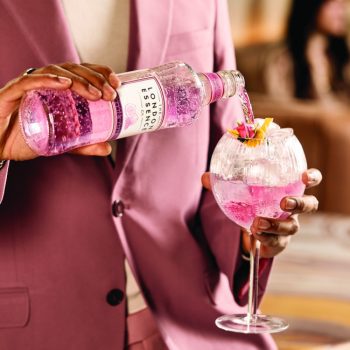
The global mixers market was worth US$9.1 billion in 2022, and is predicted to reach US$17bn by 2030, according to DataM Intelligence analysis. In the UK, sales of mixers have struggled, dropping by 7.3% to £312 million (US$378.4m) in the off-trade, and by 4.3% to £109.8m (US$133.2m) in the on-trade. But premium brands continue to perform well, particularly in the on-trade, accounting for 62% of all packaged mixer sales in the second quarter of 2023 – up by 2.3% in 12 months – according to CGA. “While some people are drinking out less frequently, they are often ready to spend more when they do so, which leads to trade-ups from mainstream mixer brands to premium ones,” says Matthew Meek, senior client manager at CGA.
Changing market
Premiumisation is driving the market. But as the gin boom plateaus, the mixer market is changing. Many brands continue to enter the category. But it’s not enough to mimic another’s blueprint for success. Being different for the sake of it doesn’t cut it either. New brands need to pursue meaningful differentiation to create fresh interest. What does that look like now?
Tonic is a major part of the mixer market, but it’s not all about the G&T. “Gin is still a hugely important category, but the brands prospering are those at the premium end that have a clear reason for being and a point of difference,” says Steve Cooper, co-founder of The Artisan Drinks Co, founded in the UK in 2018. “It’s exactly the same in tonics – people will become more demanding. There is transformational change in the mixer category, and if you are a mixer business that has been founded on the desire to pair with gin, you’re missing out on a big opportunity.”
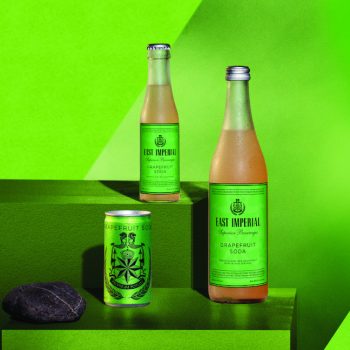
In particular, the growth of Tequila, mezcal and rum is giving rise to flavoured tonics tailored to these spirits, as well as alternative mixers like sodas, ginger beers and colas. This month The Artisan Drinks Co added a “truly adult” lemonade made with lemongrass, bergamot, and rosemary to its portfolio, which already includes a Violet Blossom tonic, Barrel Smoked cola, and Agave Lemon tonic – specifically for agave spirits – made with agave syrup, rock salt, and chilli. But while citrus (yuzu, pomelo, grapefruit), herb (lemongrass, gentian, basil), and flower (lavender, hibiscus, jasmine) are driving current trends, Tony Burt, founder and CEO of New Zealand’s East Imperial, which pioneered the yuzu tonic trend in 2015, predicts more obscure flavours becoming popular too. “Products like tonics, lemonades, and sodas are undergoing a transformation, with the infusion of exotic or lesser-known botanicals (think shiso, angelica, pine needles), the incorporation of fresh fruit (like figs, lotus root, seabuckthorn), and the use of alternative sweeteners (such as agave and monk fruit),” says Burt.
Flavour experimentation
UK drinks company Sekforde has a soda infused with prickly pear, fig and cardamom bitters tailored for agave spirits, and Britvic’s London Essence has launched an orange and fig soda. With direction and intent, flavour experimentation is what “grows the market”, says George Bagos, founder and general manager of Three Cents. “But it can also damage the market when done just for the sake of it,” he cautions. His brand, aimed at bartenders, was founded in 2014, and was built on the success of its pink grapefruit soda. This year it was acquired by Coca-Cola Hellenic Bottling Company (HBC) for €45m (US$47.6m), underlining the continued value of up-and-coming mixer brands. “Bartenders don’t need overcomplicated products. They need 100%-natural products with pungent and fresh flavours. We seek to encourage and support bartender creativity, not manufacture new trends.”
Producers are also thinking twice about quinine. While the bitter botanical derived from cinchona bark defines most tonics, some brands are reducing its presence or cutting it out. Indian tonic water must contain at least 57mg of quinine per litre, regulations in the EU state. ‘Tonic water’ usually contains some quinine, but ‘tonic’ can be used as a generic term, meaning quinine is not needed.
Wildleaf was created in 2021 by Ibi Issolah and Victoria Kumaran, tired of quinine-based tonics, which can overpower a spirit, says Issolah. Wildleaf uses botanicals from the Atlas Mountains of northwestern Africa, such as ‘wildleaf’, also known as wormwood, to give its Atlas and Lumière tonics a gentler, more herbaceous bitter component. Issolah says: “It’s about serving a customer who is not a G&T drinker, as well as making existing G&T drinkers aware that there are different options that stay true to classic bitters but without the overpowering quinine take.”
True innovation
Beyond flavour, the UK’s BZZD Energy wants to bridge the gap between mixers and energy drinks with its naturally caffeinated ‘tonic water’, infused with honey, and sweetened with stevia. BZZD launched in 2022, and is aimed at health-conscious consumers. It uses “natural quinine flavourings”, and is crafted to “not be overly botanical or bitter” so it can work with all spirits, including dark rum and whisky, says founder Louise Lloyd. “What was lacking in mixers, particularly tonic, was true innovation,” she says. “We have seen lots of brands come into this space over recent years, but the main point of difference tends to only be flavour-led. In energy drinks, the original audience has grown up, but the category hasn’t, meaning there is a large audience that we can bring into this space who don’t currently feel represented by mainstream brands that have a very young male, gamer vibe. Let’s not forget that the mixer category is also a teetotaler’s Aladdin’s cave, and with the right marketing should be able to cross back and forth with ease. “
Wildleaf’s Issolah adds: “The new generation of emerging craft tonics and sodas has led to products that are honestly good enough to stand alone as drinks, and are strong contenders for those wanting the ritual of an apéritif but without alcohol. We are in a new era in terms of what ‘spirits’ mean. Customers still want classic botanicals, but this doesn’t always translate to alcohol.”
Artistic flair
Then there is packaging. The Artisan Drinks Co was founded to ‘fight mixer monotony with artistic flair’, with its bottles and cans featuring bold, art deco illustrations, designed by co-founder and artist Alan Walsh. “A lot of the big companies entering brands into the mixer market were very close to Fever-Tree from a flavour and aesthetic perspective, following a formula of badge on the front, gold, silver, traditional, premium,” says Cooper. “We can see that in spirits the brands that are prospering are more contemporary, and bringing new ideas to the category.” Perhaps the company’s most simple innovation has been to offer its mixers in 200ml cans instead of the more common 150ml. The problem being that to make the ‘perfect serve’ (200ml + 50ml) you have to open two cans. “There are so many good reasons why cans are an exciting opportunity for the on-trade,” adds Cooper. “We’re still David in a world of Goliaths. You’ve got some powerful brands – the only way to compete with them is by standing out.”
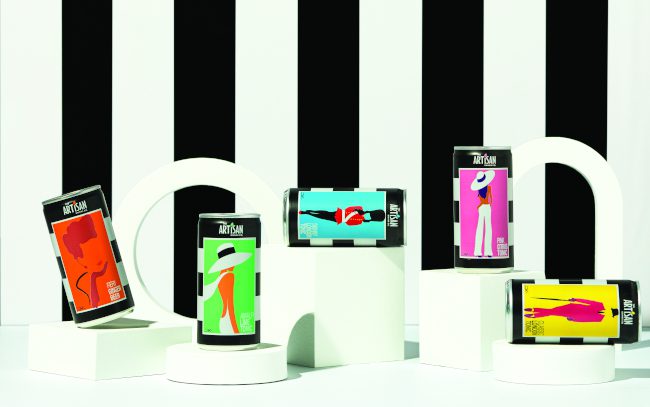
Swiss-made Match Tonic also leans on eye-catching aesthetics. Launched in 2022, its square, stackable bottles are 100% recyclable, and are made from ‘wild glass’, meaning each is intentionally imperfect. “The truth is that we were suspicious and distrustful of the tonic water category because it is very concentrated in a couple of players,” says Juan Carlos Maroto, co-founder and chief marketing officer of Match, which produces four tonics – Floral, Spicy, Mediterranean, and Indian. “It is boring, with hardly any innovation, little margin, and is not friendly with the new reality of e-commerce because the format of bottles causes a lot of breakages during transport.”
Can these brands compete with the likes of Fever-Tree and Schweppes? In terms of production volume, none come close. Yes, big sales means big money and global recognition. But that’s not what most of these up-and-coming outfits are seeking. As the ‘gin-aissance’ cools, the mixer category is transforming, with smaller premium brands reshaping the category. Non-tonic mixers are becoming important to growth, flavour is king, and for the first time in a decade the path ahead looks increasingly diverse, open to challenge, and a little less gin-soaked.
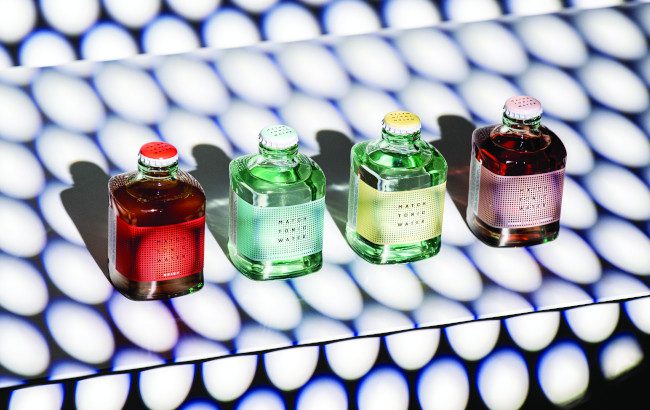
From your experience, how important is ‘health awareness’ to consumers when selecting tonic and mixer brands?
Raissa and Joyce de Haas – co-founders, Double Dutch
“In today’s health-conscious market, consumers are very aware of the amount of sugar and calories they’re consuming when it comes to their tonic and mixers of choice. While many brands have adapted to this growing demand by introducing ‘light’ options, Double Dutch has always maintained a lower-calorie profile, with nearly all drinks less than 5g of sugar and always staying under the 120-calorie mark.
“However, health-conscious consumers also value authenticity and brand transparency, and look for natural and traditional ingredients over processed offerings, even if this might mean a slightly higher sugar content from a drink.”
Related news
Two Stacks: relevance essential for driving growth
